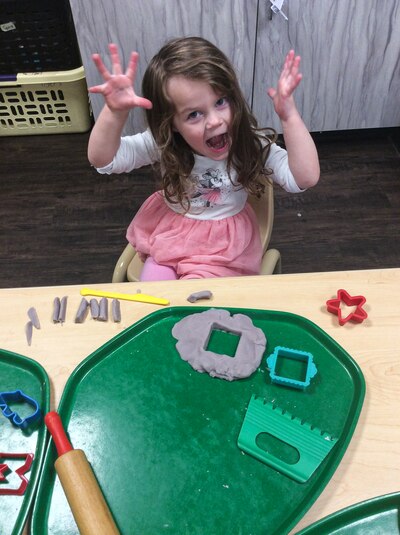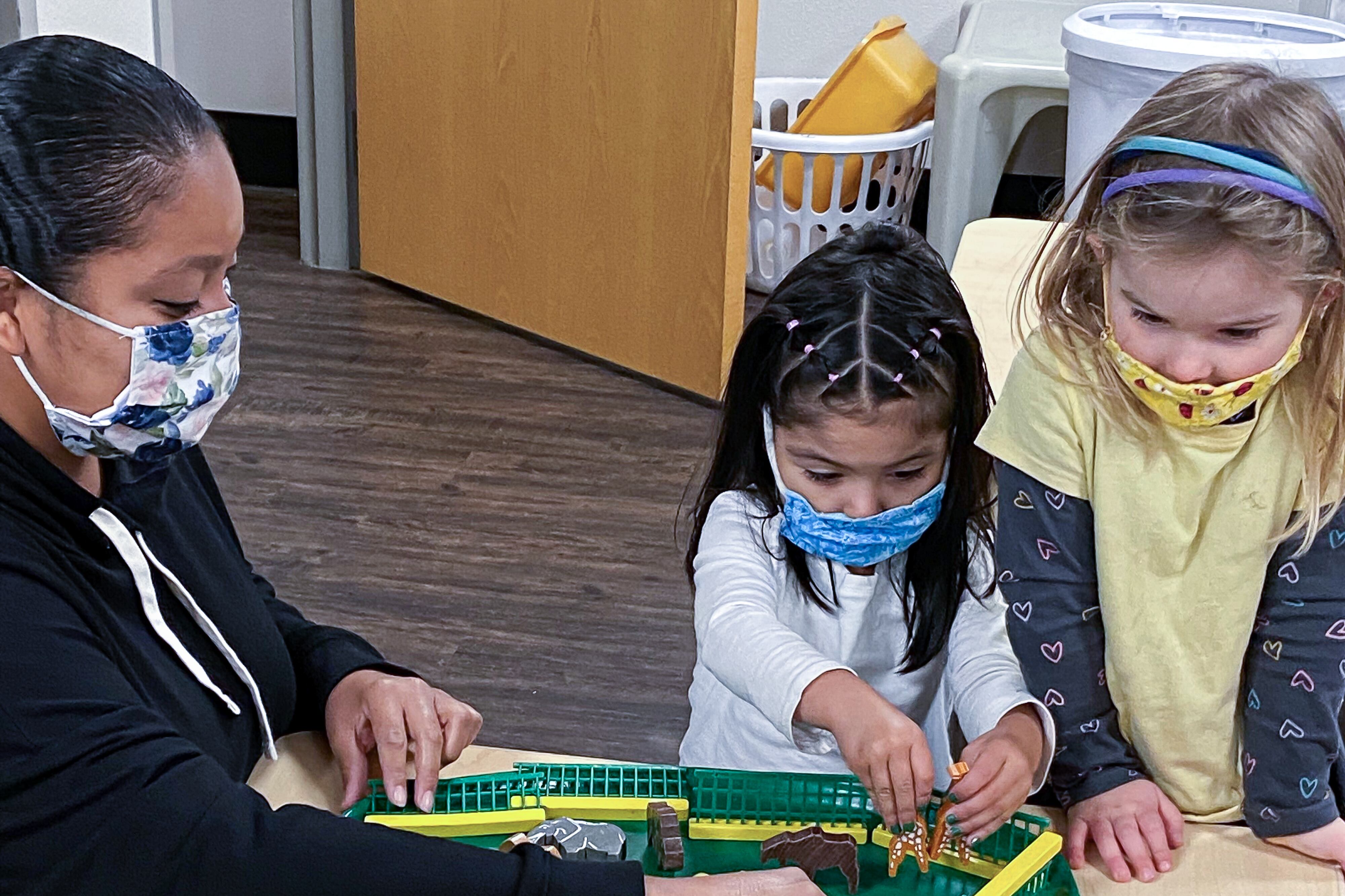Should preschool classes be capped at 16 children? Should teachers have bachelor’s degrees? Should classrooms be subject to annual in-person visits from expert evaluators?
These are a few of the questions Colorado leaders will grapple with as they take on the big, messy task of defining what high-quality preschool looks like — and deciding how it should be measured — when the state launches free preschool for 4-year-olds in 2023.
The new universal program, which will be funded with a voter-approved nicotine tax, has been one of Gov. Jared Polis’ signature priorities since he took office in 2018. It represents a major expansion of Colorado’s current state-funded preschool program, which serves about 23,000 children from low-income households, or who have poor social skills, language delays, or other risk factors.
Experts say preschool can produce short- and long-term benefits for kids, but only if it’s high quality. That’s the reason to hit on a winning formula from the start, but with lots of yardsticks to choose from, an already strained early childhood workforce, and limited money for quality-boosting efforts, it’s easier said than done.
“There’s so much discourse around rating quality. … It’s very complicated,” said Sherri Valdez, executive director of the Early Childhood Council of San Luis Valley in southern Colorado. “My hope is that social and emotional development will be prioritized no matter what direction we go.”
Melissa Mares, senior policy analyst for early childhood at the Colorado Children’s Campaign, wants the state’s approach to take a holistic view of young children, give families a say, and better align various metrics.
“Our current measures provide a really good foundation but this is an opportunity to reimagine it,” she said.
Khatira Amn, an early childhood education policy advocate at the Denver-based Spring Institute for Intercultural Learning, said she wants the universal preschool program to be culturally and linguistically responsive by pushing to attract bilingual teachers, training teachers to work with diverse populations, and communicating with parents in their primary language — even if it’s not English or Spanish.
Amn, who is originally from Afghanistan, saw a moment of cultural recognition resonate with her own preschooler when his teacher asked him about the Muslim holiday Eid that his family celebrates.
“That was a very tiny conversation related to the culture, but that really had a huge impact on my son,” she said. “He was extremely happy.”
Vision vs. reality
Colorado’s current state-funded preschool program serves about a quarter of the state’s 4-year-olds and a smaller number of 3-year-olds. It has an annual budget of around $128 million and gives most kids 10 hours a week of tuition-free preschool, though some get more.
Colorado’s nicotine tax will bring in a burst of new preschool money — about $165 million in the program’s first year and somewhat more in subsequent years — allowing the state to offer tuition-free preschool to all 4-year-olds.
Like the current version, the universal program will provide 10 hours of class time a week, though children with the highest needs could get additional hours and services. Funding for the current targeted preschool program will be folded into the new program.
Universal preschool will be voluntary for families, but it’s likely many will be interested even if it’s only a half day. Depending on how many families opt in, state-funded preschool enrollment could triple.
State leaders planning the universal preschool rollout have vigorously embraced the vision for across-the-board quality, stipulating that every provider will have to meet certain standards to participate. But the reality is that even Colorado’s current preschool program — a much smaller version of what’s planned — isn’t an exemplar of quality.
More than 40% of providers in the program have one of the lowest two ratings in the state’s five-level quality measurement system, Colorado Shines. In addition, program requirements, which limit class sizes to 16, call for weekly teacher planning time, and mandate regular child assessments, meet only 4 of 10 quality benchmarks recommended by the National Institute for Early Education Research at Rutgers University.
W. Steven Barnett, senior co-director of the institute, said states that meet all 10 benchmarks don’t automatically have high-quality preschool, but will have key ingredients in the mix, most importantly processes that help preschool providers continuously improve.
“The benchmarks are a starting place for policy,” he said. “You could think of them as a gateway to quality, not a quality assurance.”
Barnett said quality standards must match the goals of public preschool programs. Many states, including Colorado, have the goal-setting part of the equation down, but fall short on matching them to quality measures, he said.
Teachers make the difference
Experts say strong, well-supported teachers are critical to high-quality preschool, and that bachelor’s degree requirements are one way to get there. The degrees aren’t required in Colorado, in part because, as in many states, preschool teachers often make less than fast food workers — a median hourly wage of $15 — and many don’t have the time or money to further their education.
To complicate matters, labor shortages recently prompted state officials to lower the qualifications for child care and preschool teachers, opening the way for people with even less education and experience to join the workforce.
“We have a tendency to find a warm body and pay them peanuts,” said Valdez, of the San Luis Valley early childhood council. “We have a lot of work to do and It comes down to money.”
While Colorado has a number of initiatives underway to give early childhood providers training and support — plus the promise of nicotine tax proceeds — it’s unclear how far the money will go.
“Will they try to stretch the available funding too thin?” Barnett said. “You can kind of see the 10 hours as a symptom of that.”
A spokesman for the governor said the state’s new early childhood department, set to launch in July, will convene a group this summer to review various sets of quality standards and create a set for universal preschool that layer on top of minimum licensing requirements.
Although there are 18 months until the universal preschool program officially launches, it will be a “super-duper tight” timeline for establishing and communicating the requirements to preschool providers who want to participate, said Debi Mathias, director of the ECE Quality Improvement Systems Network at the BUILD Initiative, a national organization that helps states develop early childhood systems.
One possible solution to both the time and money crunch, she said, is to set high standards but give providers a window of time — say, two to five years — to meet them. The state’s preschool recommendations, finalized in January, give a nod to that kind of phased approach.
“You can hold out a vision of where you want to be and come up with strategies and implementation plans that give people time to get there,” Mathias said.
Colorado Shines

Both Teaching Tree Early Childhood Learning Centers that Anne Lance leads in northern Colorado are highly rated — Level 4s — under the Colorado Shines system. But it takes her staff many hours and lots of paperwork to prepare for the evaluations.
“I don’t necessarily think it’s all about reinventing the wheel,” she said. “Definitely simplifying it would help.”
Another issue, she said, is the cycle of evaluations every three years. A bad day when the evaluator visits means that single snapshot can last a long time.
To complicate matters further, Colorado’s universal preschool program will be offered in schools, community sites, and in homes licensed by the state. It’s a mix of choices advocates applaud, but it can be tricky to apply a consistent set of quality standards to such a wide range of settings.
A 2019 study published by the U.S. Department of Education looking at nine states’ quality rating systems — though not Colorado Shines — found the systems captured differences in program quality but that those differences didn’t translate to differences in child outcomes. In other words, children in higher-rated programs didn’t consistently perform better than those in lower-rated programs.
The authors cite various reasons for this, including that rating criteria don’t correspond specifically enough to factors that influence child outcomes. For example, many quality rating systems, including Colorado’s, evaluate the providers’ business practices, which don’t have a lot to do with what children learn.
Mathias said the results speak to the widespread underfunding of quality rating systems, which are meant both to rate early childhood quality and provide money and resources to help providers improve.
“We did not give providers enough money and we did not give the system enough money,” she said.






